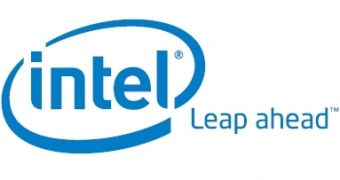The giant chipmaker Intel demonstrated for the first time its upcoming Moorestown platform designed for Mobile Internet Devices (MID) at the Intel Developer Forum in Taiwan. Intel executive Anand Chandrasekher talked at IDF bout the technology innovations that had driven the industry over the past 40 years, including the Atom and Nehalem processors and the Moorestown platform as examples of such innovation. The company enters the MID market segment with the demonstration of the world's first working Moorestown platform.
“Technology innovation is the catalyst for new user experiences, industry collaborations and business models that together will shape the next 40 years," said Chandrasekher. "As the next billion people connect to and experience the Internet, significant opportunities lie in the power of technology and the development of purpose-built devices that deliver more targeted computing needs and experiences,” added Chandrasekher in his keynote at IDF today.
Basically, Moorestown is a SOC, code-named Lincroft, which packs a 45nm processor, graphics, memory controller and video encode/decode into a single chip and an I/O hub code-named Langwell, designed with support for wireless, storage, and display components connectivity and also includes several board level functions. According to Chandrasekher, Intel is working on reducing the idle power of the platform by more than ten times compared to the first-generation Atom-based MIDs.
Chandrasekher also said that Moorestown is expected to produce a range of exciting and innovative developments able to extend the full Internet experience into the smartphone area with the Communication MID. He revealed that the platform would provide support for a wide range of wireless technologies including 3G, WiMAX, WiFi, GPS, Bluetooth and mobile TV. Chandrasekher added that Intel works with Ericsson and Option for HSPA data modules that would be optimized for Moorestown's power requirements.
Intel preps Nehalem CPUs for desktops, mobile PCs and servers
The general manager of Intel's Server Platforms Group, Kirk Skaugen, talked at IDF about the next-generation high-end desktop Core i7 processor, which would be launched next month. According to him, the high-end desktops powered by these CPUs will be able to bring outstanding performance for gaming and content creation applications. Skaugen unveiled the fact that the Nehalem processors would also power the 2009 Intel vPro technology-based business clients codenamed Piketown for desktops and Calpella.
The ready-to-come Nehalem architecture will cover a wide range of products. For the beginning, we'll see the Core i7 processor and a code-named Nehalem-EP chip designed for the efficient performance server segment. The company also plans a Nehalem-EX CPU designed for the expandable server market segment, in addition to a series of desktop and mobile microprocessors, including Havendale, Lynnfield, Auburndale and Clarksfield, which will come in the second half of the next year.
More details on the architecture design of the Nehalem processor have been provided by Intel's Steve Pawlowski. He said that the new processors would triple the memory bandwidth of previous Intel platforms, while the Hyper-Threading Technology will allow multiple threads to be performed simultaneously, offering eight-threaded performance capability on four cores. The Turbo Boost Technology is meant to accelerate performance as to match workloads, while also being able to adjust the clock speed for both single- and multi-threaded applications.
More power-efficiency is provided through new power gate transistors based on Intel's 45nm Hi-k manufacturing process which turn-off the cores when idling. According to Intel, the Nehalem processors will be able to turn to a sleep state which was formerly enabled only on mobile PCs.

 14 DAY TRIAL //
14 DAY TRIAL //